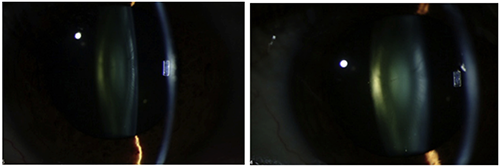Space Lab Technology May Help Researchers Detect Early Signs of Cataract
As we age, proteins in the lenses of our eyes start misbehaving: They unfold and congregate in clusters that block, scatter and distort light as it passes through the lens. A cloudy area, or cataract, forms. In a new study, scientists found that throughout our lifetime, levels of a key protein decline, and may be an early warning sign of a developing cataract. The study, conducted by scientists at the National Eye Institute and the Wilmer Eye Institute of Johns Hopkins Hospital and published online in Ophthalmology, suggests that there is a window before cataracts develop when there may be time to intervene and prevent them.
While cataract surgery is an effective treatment, its cost and the lack of well-trained surgeons limit its availability in many parts of the world, making cataracts the leading cause of blindness.
This page was last updated on Friday, January 21, 2022
